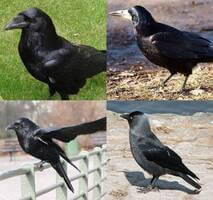Many customers are unsure whether they have an infestation of ravens, rooks, crows, jackdaws… All of these birds are corvids with entirely black plumage, which can be confusing.
In this article, we will explain the fundamental characteristics of these corvids and how to differentiate them.
Raven Infestation
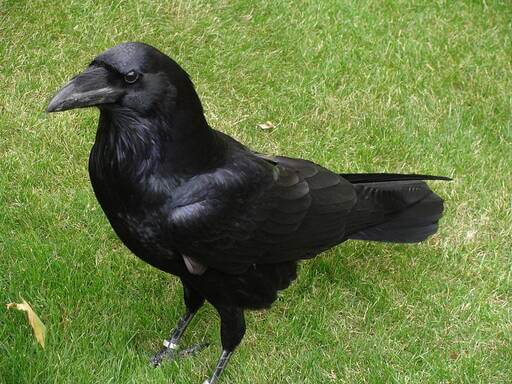
The raven (Corvus Corax, Raven – in English) is easy to identify because it is the largest corvid. Ravens are much larger than rooks, jackdaws, or carrion crows. Their size is very similar to that of a vulture. A raven usually measures between 56 and 78 centimeters and weighs 0.5 to 1.5 kg. Its plumage is black, the tail ends in a diamond shape, and its robust beak is slightly curved downward.
The raven is omnivorous. It feeds on insects, carrion, cereals, fruit, food waste, or small animals.
Rook Infestation
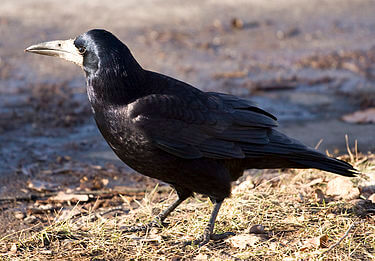
The rook (Corvus Frugilegus) is smaller in size than the crow, but very similar in size to the carrion crows. So, sometimes, rooks and carrion crows can be confused. The best way to know if it is a rook infestation or a carrion crow infestation is by looking at the color of the beak: rooks have a grayish beak of a lighter color than carrion crows and the shape of the top of the head: which is more pointed in rooks than in carrion crows. These are the two most important features to look at (beak color and shape of the top of the head) to know if it is a rook infestation or a carrion crow infestation.
Carrion Crow or Crow Infestation
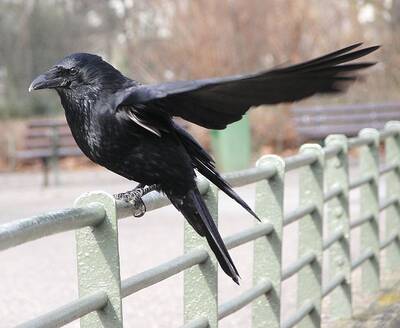
The carrion crow (Corvus Corone) has black plumage, black beak, square tail, and hoarse caw, which it usually repeats three times. The carrion crow is distinguished from the raven by being much smaller in size. In addition, raven infestations have larger populations. The carrion crow is distinguished from the rook or rook by having a darker black beak than the rooks.
Carrion crows are scavenger birds, but they also eat insects, earthworms, amphibians, small mammals…
Jackdaw Infestation
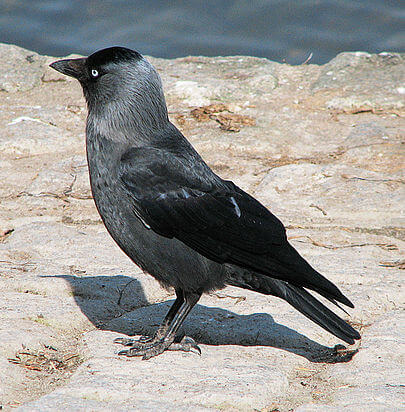
The jackdaw (Corvus Monedula or Coleus Monedula) is the smallest corvid of all. It usually measures between 35-40 cm in length. Its plumage is black, like the rest of the corvids, but its nape is gray. Jackdaws are easily identified because their eyes have a white iris. They have a short and thick beak. Their flight is fast.
Summarizing: How to differentiate between Ravens, Rooks, Crows, and Jackdaws
The following table shows the most characteristic differential features to differentiate between ravens, rooks, crows, and jackdaws.
| Corvid | Scientific Name | Common Name | Corvid Size | Most Important Differential Feature |
|---|---|---|---|---|
| Raven | Corvus Corax | Raven | 56-78 cm | The largest corvid |
| Rook | Corvus Frugilegus | Rook | 45-47 cm | Lighter beak than crow Top of the head more pointed |
| Crow | Corvus Corone | Crow | 44-51 cm | Smaller than raven Darker beak than rook |
| Jackdaw | Corvus / Coleus Monedula | Jackdaw | 34-39 cm | The smallest corvid Eye with white iris |
In summary:
- If we see a flock of black-feathered corvids with white eyes: it is jackdaws
- If they are of large size, similar to a vulture: it is a raven infestation
- If their size is medium and their beak is grayish: we are facing a roo infestation
- On the contrary, if their size is medium and their beak is dark: we have a crow infestation
How to Scare Away Raven, Rook, Crow, and Jackdaw Infestations
To repel corvid infestations, BirdGard Iberia recommends using sound repellent devices. These devices emit distress calls from the corvids we want to repel, along with predator calls.
Appealing to their natural protective instinct, when these corvids hear the calls of others of their same species warning them of danger, they immediately take flight and leave the area.
That is why it is essential that the sound repellent devices are configured with a sound chip specific to the corvid species that we need to repel. BirdGard Iberia has an extensive catalog of hundreds of sound chips. The most commonly used to scare away these corvid species are:
- Chip #49 for repelling raven and rook infestations
- Chip #171 for repelling crow and rook infestations
- Chip #815 specifically for repelling rook infestations
- Chip #663 for repelling crow, rook, and jackdaw infestations
Additionally, there are different models of these crow repellents depending on the required coverage area:
- The smallest model, the “Bird Gard Pro” crow repellent covers 0.6 hectares
- The “Bird Gard Pro Plus” crow repellent: 1.2 hectares
- The “Bird Gard Super Pro” crow repellent: 2.4 hectares
- Finally, the most powerful crow repellent is the “Bird Gard Super Pro Amp” which covers up to 12 hectares
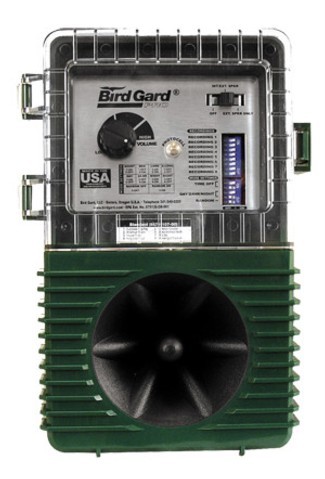
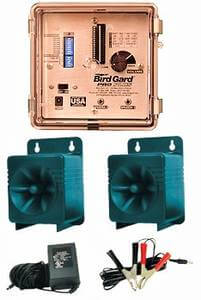
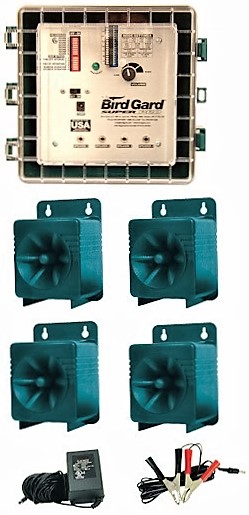
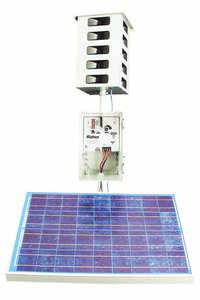
Success Stories – Crow Infestations
These sound deterrents are very effective at scaring away crows, as demonstrated by the following customer references:
- Floren, a cattle farmer in Udabe (Navarra), explains how he manages to protect his corn from birds. Floren has 23 hectares of corn, which he uses to feed his cattle.
- Mamen Sánchez, from the company Aislamientos Industriales, explains how they managed to get rid of crows thanks to BirdGard Iberia’s sound deterrents.
- This article explains how to scare away crows, specifically how to scare away crows from cornfields, where they cause the most problems…
- The multinational Filstone explains how they managed to eliminate the presence of crows in their 40-hectare quarry in Portugal, using Bird Gard Super Pro Amp bioacoustic deterrents.
If you need to protect your crops, industrial installation, landfill… from a crow infestation, whether they are crows, jackdaws, rooks, or magpies, do not hesitate to contact BirdGard Iberia. One of their experts will advise you for free and without obligation on the most suitable solution for your case.
